This “Limited Edition” 2-disc set from Radiance Films is currently available for purchase.
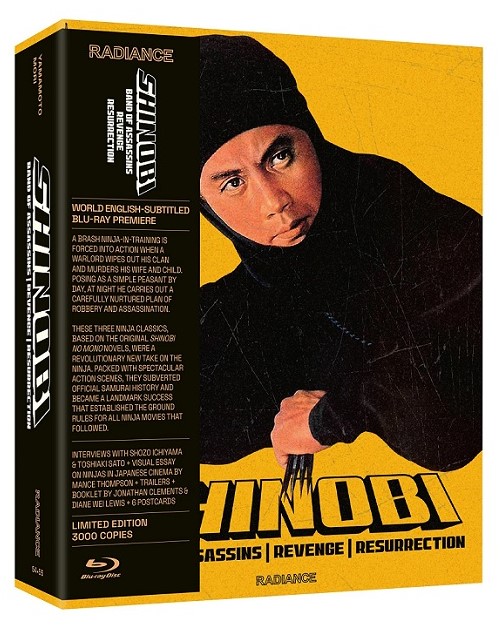
If you grew up in the 1980s, you likely saw more than a few ninja movies. Typically, these characters were presented as stealthy, hooded killers dressed in all-black get-ups (although they would often be wearing headbands as well). Of course, the cinematic history of these Japanese figures is much more detailed and interesting than these occasionally cheesy efforts. Radiance Films is now presenting an impressive 2-disc set called Shinobi: Band of Assassins/Revenge/Resurrection that puts a welcome, historical spin on the ninja
The release contains three iconic Japanese ninja titles based on the famous Shinobi no Mono novels (the original was first published as a serial in a newspaper). As you might have already guessed from the name of the Blu-ray release, you’ll get the titles Band of Assassins (1962) aka Ninja, a Band of Assassins aka Shinobi No Mono, as well as Revenge (1963) aka Shinobi No Mono 2: Revenge and Resurrection (1963) aka Shinobi No Mono 3: Resurrection.
The films present a more accurate and intriguing portrait of the ninja and their place in Japanese society. Set in the late 16th century, the plot of Band of Assassins revolves around Ishikawa Goemon (Raizô Ichikawa), an ambitious young ninja who hasn’t yet grasped the teachings of his master. While ninjas are spy-like assassins who may only serve their unit and shall never marry or let others know of their identity, Goemon is something of a lady charmer who also wants to become a famous and well-respected leader.
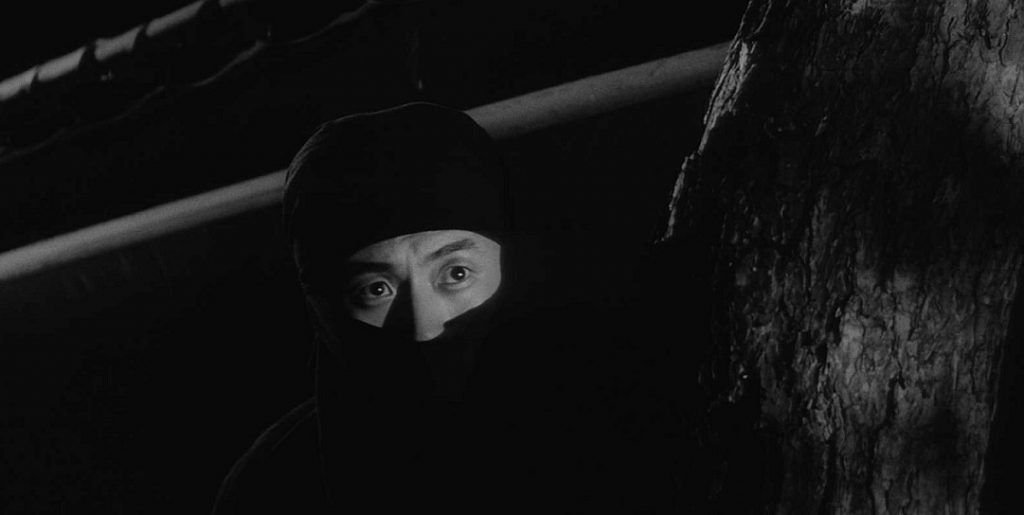
Things quickly go haywire when nasty warlord Oda Nobunaga (Tomisaburô Wakayama) tries to take control of Japan. The figure raids territories and builds allies among those too afraid to square off against him. Nobunaga also despises ninjas and seeks to wipe them all out. As if that wasn’t enough to deal with, Goemon gets involved with the wife (Kyōko Kishada) of his master Sandayû Momochi (Yûnosuke Itô), resulting in a strange death that causes him to be cast out from his home/school. The only way he may be granted forgiveness is to assassinate Nobunaga, but he initially resists, instead falling for and marrying a woman named Maki (Shiho Fujimura). Alas, Momochi continues to pressure Goemon until he tries to carry out the deed.
This picture does have an epic feel with striking widescreen photography, particularly during nighttime scenes between Goemon and his master on a sunken path. The action is impressive and, while there is a lot to take in about the various characters and their motivations, the plotting isn’t overly difficult to follow. In one way or another, all of the leaders can be seen jockeying for positions of power.
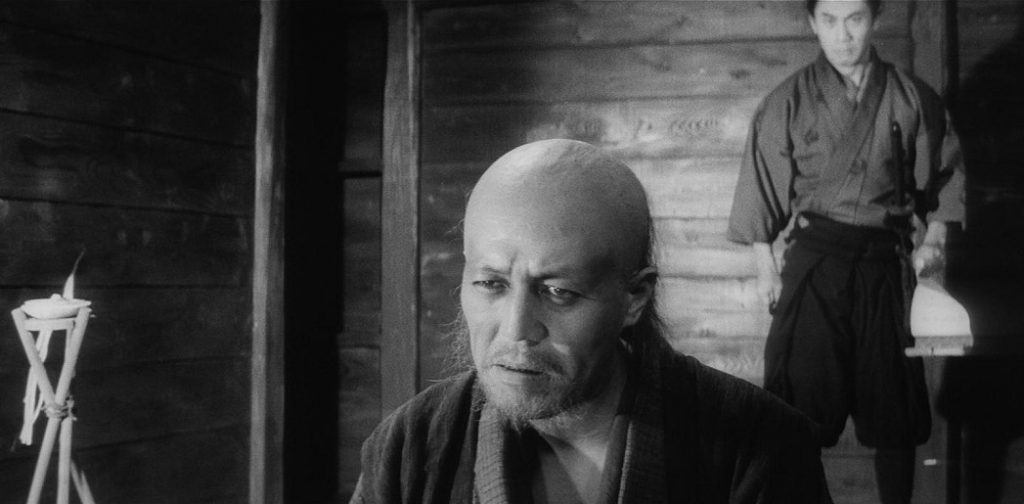
There is also a clever and funny twist involving Momochi and his outrageous manipulation of two different ninja groups. It’s needlessly complicated as is his underhanded plan for Goemon, but is amusing to watch. Based on a real figure, warlord Oda Nobunaga is an intimidating threat to the characters and consistently manages to avoid repercussions for his terrible acts, which adds another unique element to the story. But in the end, the conflict between Goemon and Momochi is what ends up taking center stage.
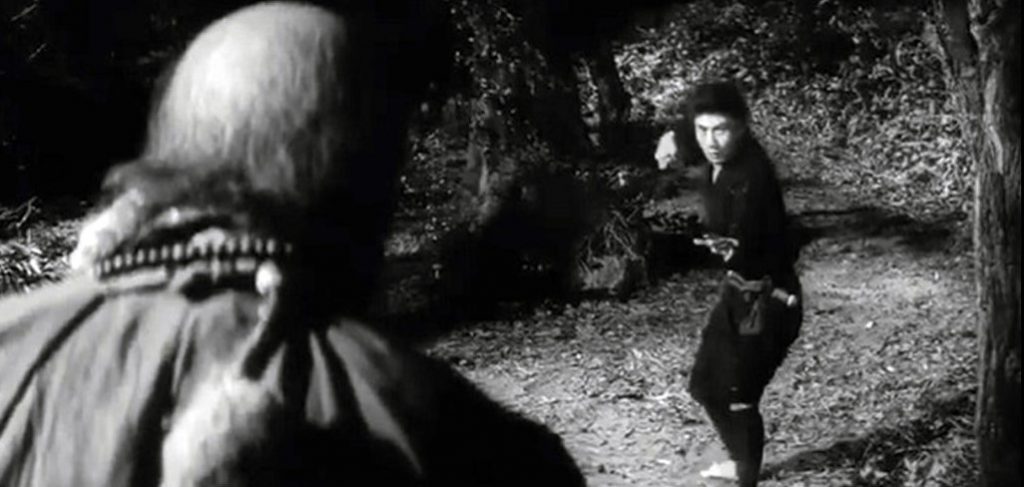
As for the lead, Goemon is a relatable character who is pulled into the political intrigue, violence strife against his will. He’s an everyman or sorts, fighting against oppressive warlords and high-ranking political figures. The film is also notable for introducing the black costume that ninjas in subsequent movies would adopt. And, of course, the action is very well-handled. As you might expect, because the film is over 60 years old, some of the combat scenes don’t come across quite as zippy, but there are plenty of thrills watching them.
Since the first picture was a massive hit in Japan, director Satsuo Yamamoto was hired to shoot the follow up, Revenge. It feels like the second half of the same movie (in a manner similar to the recent Dune series) and is just as strong as the original film.
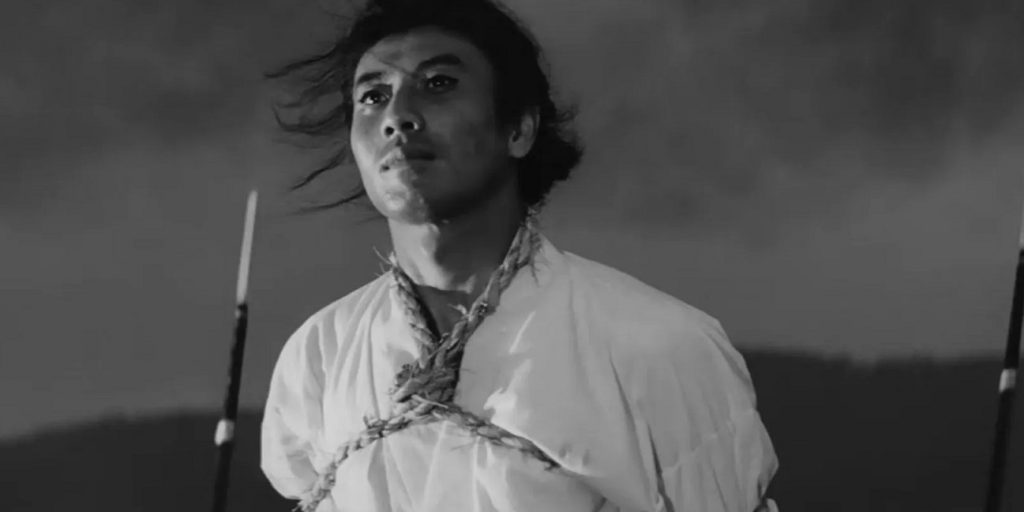
This sequel finds Goemon suffering an unbelievable tragedy at the hands of Nobunaga’s forces. He becomes determined to finally slay the even-more-powerful leader. This results in a more aggressive protagonist seeking vengeance. It’s a darker film and in some ways a bolder chapter in the series. When the protagonist finally confronts Nobunaga in person, the results are dynamic to watch. Curiously, there is more political intrigue as well, as one of the villain’s generals, Toyotomi Hideyoshi (Eijirô Tôno), makes a play to ultimately become Japan’s new ruler. Goemon’s relentless pursuit ultimately results in a final tragedy that makes it impossible for the story to continue.

But it did continue, mostly because part two was just as successful as the original film. Resurrection sees a thought-to-be-dead but miraculously revitalized Goemon seeking retribution on Toyotomi Hideyoshi. As this is occurring, there is more maneuvering behind the scenes as surviving characters hope to wrestle power away from Hideyoshi. The movie contains a few entertainingly exaggerated action scenes with leaping ninjas using various weapons. And the story running through the first two films is officially wrapped up. Yet in the end, the third title isn’t quite as powerful as the first two pictures. Since Goemon is in hiding for much of the running time, there is a lot of blunt exposition and plans being drawn up by various individuals that don’t really come to fruition.
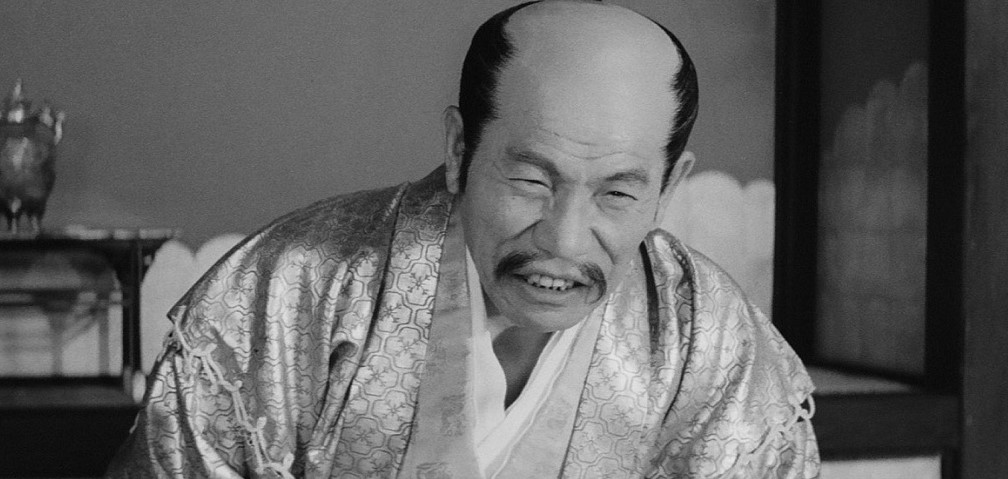
Overall, this is a very enjoyable series of films that are fascinating and exciting to watch, while also introducing several elements that will eventually become tropes of the genre. The picture quality is quite nice on all of the discs. I viewed them on a large screen on Blu-ray upconverted by a 4K Ultra HD player and the quality was pleasing. It certainly looks like film but there is a very modest amount of grain on the black and white images that isn’t noticeable. This is the first time the movies have ever been made available outside of Japan and the picture is excellent, with some of the wide shots making a particularly strong impression. The stills shown here don’t do the disc justice in terms of its picture.
Another plus is the bonus features that add plenty of insightful information about ninjas and how these features came to be. The artistic director of the Tokyo International Film Festival talks about the career of Satsuo Yamamoto, who directed the first two films in the series – It’s amazing to listen to. Yamamoto was a popular filmmaker in Japan known for making socially conscious films about the working class. After World War II, he got involved in a labor strike and fought for higher wages for studio crew members. The US military eventually came in to break up the protests, but Yamamoto did manage to reach a settlement with studio executives. Unfortunately, he found himself being discarded by major studios.
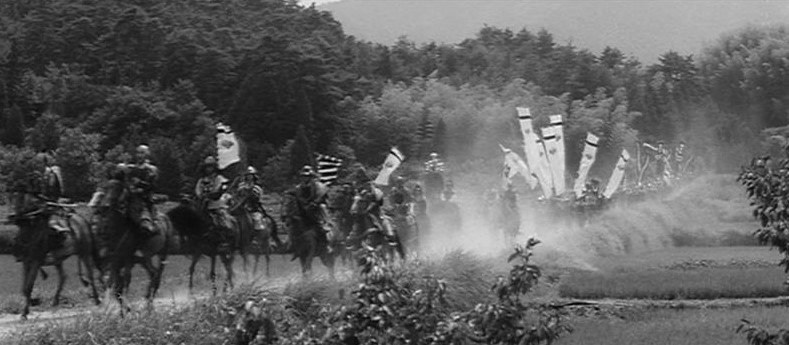
Yamamoto ended up going independent and found success making pictures outside the studio system. When the 60s rolled around and the big Japanese companies found themselves in financial trouble, they seemed more willing to talk to the director again. He pitched the Shinobi concept to a right-wing executive at Daiei Films, who agreed to finance the project. Yamamoto avoided telling him that the novel had been published and popularized in the country’s communist newspaper. The filmmaker accurately portrayed the ninja as the lowest warrior in social standing. He also cleverly suggests how horrifically these fighters were being treated by rulers and the upper classes in their homeland.
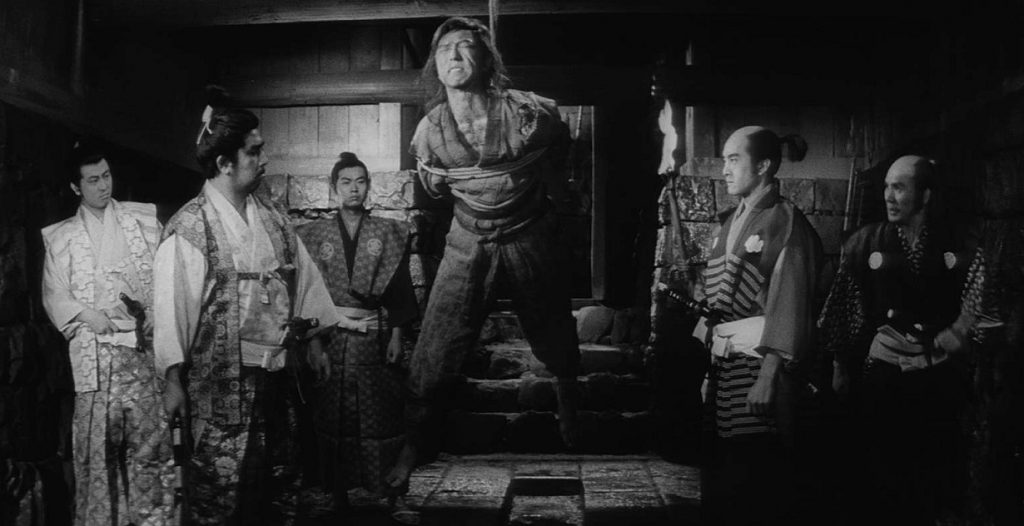
The speaker also notes that Yamamoto felt that the story was finished after the second film. He rejected offers to make a third installment, but went on working for Daiei Films and was responsible for more popular hits. It seems the Shinobi project really helped rekindle his career in Japan.
Additionally, there is an examination of the film’s star Raizô Ichikawa, who was referred to as “the Japanese James Dean”. After the third title, the actor returned for another five sequels and had great success in other movie series. He tragically passed away of colon cancer at the age of 37. This featurette gives a nice overview of the man and his career.
There is also a piece on the history of ninjas in the movies, noting that the assassins have been a part of cinema for over 100 years. More than 400 ninja films have been made, and the narrator goes over some of the best titles, while also detailing the tropes that began to appear in the genre. He notes that the peak for ninja-centered productions was the 1980s, but mentions some current properties that are popular with audiences at home and around the world.
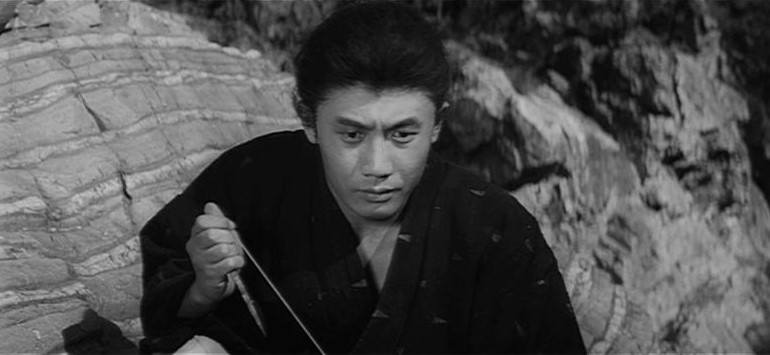
Trailers are also included on the discs and the set itself appears in a rigid box with full height cases and a booklet containing essays on the film series and the original novel these movies were adapted from.
If you like ninjas, martial arts or even classic action cinema, the Shinobi Blu-rayset is well worth picking up. These are handsomely-mounted productions that represent a major milestone for ninjas in cinema. The discs themselves offer a great picture and invaluable details about the history of these movies and the people who made them.


